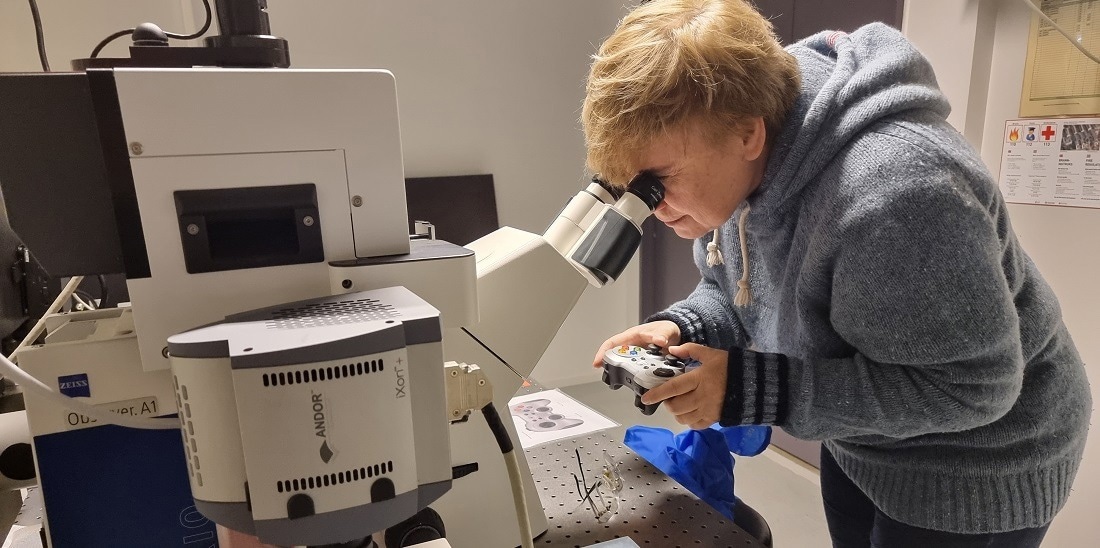Scientists have devised an approach for identifying bacteria swiftly, inexpensively, and with greater precision. This advancement holds the potential for minimizing the reliance on antibiotics.
 Professor Erika Eiser was in the group that proved that it is possible to identify bacteria and viruses more effectively with a new method. Image Credit: Marie-Laure Olivier, PoreLab, Norwegian University of Science and Technology.
Professor Erika Eiser was in the group that proved that it is possible to identify bacteria and viruses more effectively with a new method. Image Credit: Marie-Laure Olivier, PoreLab, Norwegian University of Science and Technology.
Excessive global antibiotic use has led to the emergence of drug-resistant bacteria. Treating bacterial diseases is increasingly challenging, given that antibiotics represent a primary line of defense against them.
A crucial stride in reducing antibiotic usage involves discovering more effective techniques for pathogen identification, and encouragingly, there is positive news on this front.
We have developed a simple tool that can identify all of the genetic material in bacteria. This allows us to find out more quickly what kind of bacteria a sick person or animal is affected by, or what kind of bacteria are found in food or the environment. We can then also decide whether it is necessary to use antibiotics against the bacterium, and if so what kind, so we don’t have to use as much medication.”
Erika Eiser, Professor, Department of Physics, Norwegian University of Science and Technology
No Need to Copy Genetic Material
The most recent discoveries are credited to an international team of researchers, and their findings have been showcased in the esteemed journal Proceedings of the National Academy of Sciences (PNAS).
Notably contributing to this research was Peicheng Xu from the Institute of Physics at the Chinese Academy of Sciences in Beijing, where Eiser had previously served as an academic supervisor.
One of the factors expediting the new method is the elimination of a process known as “gene amplification.” This step, involving the replication of genetic material for easier analysis, is now bypassed, contributing to the increased speed of the technique.
We can analyze all of the bacterium’s DNA without gene amplification by using a method previously used in simulations.”
Erika Eiser, Professor, Department of Physics, Norwegian University of Science and Technology
Eiser collaborated with Tine Curk from Johns Hopkins University as part of a research team that formulated the theoretical foundation for the method, demonstrating its practical applicability as well.
Eiser stated, “We get excellent results when we apply the theoretical method to real samples.”
The Method Creates Clumps
DNA comprises sequences called nucleotides arranged in rows. The novel method allows researchers to pinpoint short sequences within the bacteria’s DNA. This is achieved by observing how these sequences attach to different versions of DNA integrated into colloids, which are particles dispersed in a liquid.
In essence, the significance lies in the rapid identification of bacteria, as they bind in diverse ways to these colloids, causing them to aggregate.
The key takeaway is that less material needs analysis, eliminating the need for copying steps, ultimately saving time and money.
Using this method, we saw how as few as five E. coli bacteria caused the colloids to create clusters.”
Erika Eiser, Professor, Department of Physics, Norwegian University of Science and Technology
Still a Way to Go
The current stage of this development is preliminary. Eiser has published a proof-of-principle experiment, indicating that there is considerable work ahead before the method achieves widespread adoption.
“The findings can provide us with a reliable method for identifying pathogens in disciplines such as food safety, disease control, and environmental monitoring,” states Professor Eiser.
In a landscape where antibiotic resistance among bacteria is on the rise, this is especially positive news.
Source:
Journal reference:
Xu, P., et al. (2023) Whole-genome detection using multivalent DNA-coated colloids. Proceedings of the National Academy of Sciences. doi.org/10.1073/pnas.2305995120